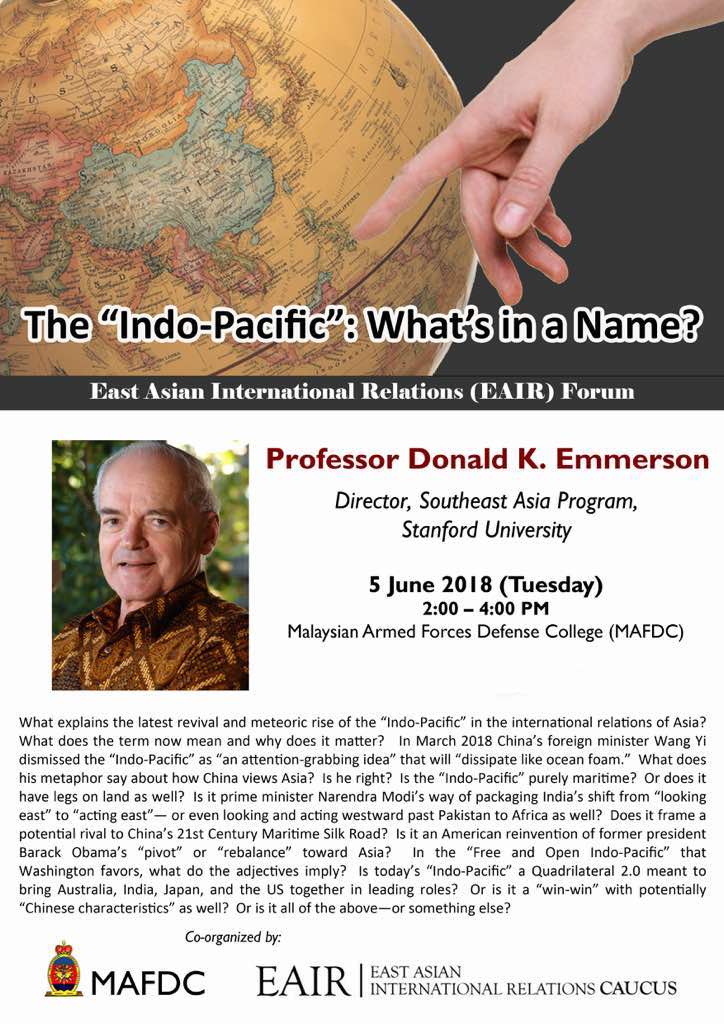
Professor Donald K. Emmerson
5 June 2018
What explains the latest revival and meteoric rise of the “Indo-Pacific” in the international relations of Asia? What does the term now mean and why does it matter? In March 2018 China’s foreign minister Wang Yi dismissed the “Indo-Pacific” as “an attention-grabbing idea” that will “dissipate like ocean foam.” What does his metaphor say about how China views Asia? Is he right? Is the “Indo-Pacific” purely maritime? Or does it have legs on land as well? Is it prime minister Narendra Modi’s way of packaging India’s shift from “looking east” to “acting east”— or even looking and acting westward past Pakistan to Africa as well? Does it frame a potential rival to China’s 21st Century Maritime Silk Road? Is it an American reinvention of former president Barack Obama’s “pivot” or “rebalance” toward Asia? In the “Free and Open Indo-Pacific” that Washington favors, what do the adjectives imply? Is today’s “Indo-Pacific” a Quadrilateral 2.0 meant to bring Australia, India, Japan, and the US together in leading roles? Or is it a “win-win” with potentially “Chinese characteristics” as well? Or is it all of the above—or something else?
About the Speaker: Donald K. Emmerson heads the Southeast Asia Program (SeAP) at Stanford University, where he is also affiliated with interdisciplinary research centers on democracy and Islam. He is presently editing a book on Southeast Asia-China relations. His publications include, in 2017-18: ASEAN @ 50, Southeast Asia @ Risk: What Should Be Done? (co-edited, SeAP); “Mapping ASEAN’s Futures” (Journal of Contemporary Southeast Asia); “Singapore and Goliath?” (Journal of Democracy); and a chapter in The South China Sea Disputes (ed. Yang Razali Kassim). Previous positions include a professorship at the University of Wisconsin-Madison and a fellowship at the Institute for Advanced Study. His degrees are from Yale (PhD) and Princeton (BA).
